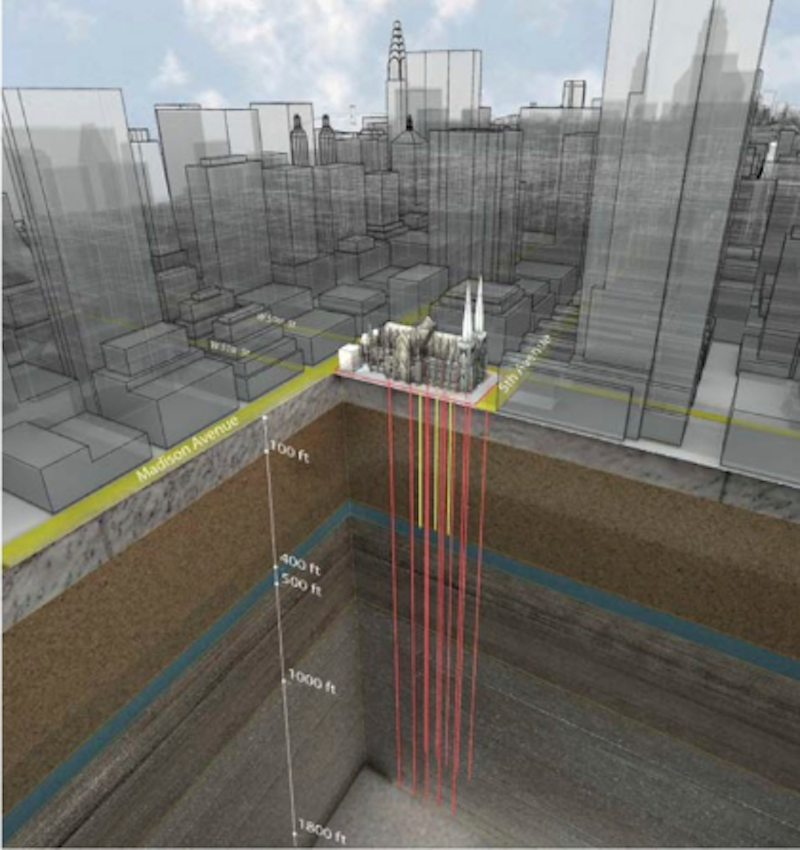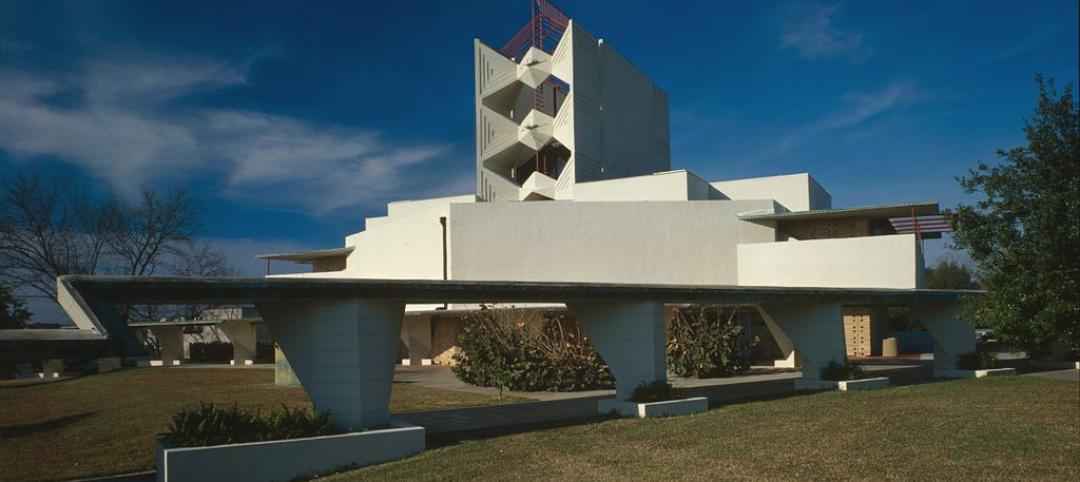As part of the effort to adapt St Patrick’s Cathedral in New York to the structural and environmental standards required of the 21st century, the building has been integrated with a state-of-the-art geothermal plant. The new plant allows the cathedral and adjoining buildings to regulate temperature with increased efficiency and a reduction in CO2 emissions.
In order to accomplish this task, the project’s design team - featuring Murphy, Burnham, & Buttrick, Landmark Facilities Group, and PW Grosser - repurposed the existing infrastructure to harness clean, renewable power from an underground system of 10 wells. Four wells on 51st Street and six wells on 50th Street were drilled to a depth of up to 2,200 feet.
A Dedicated Heat Recovery Chiller extracts thermal energy from the wells and distributes it throughout the campus for heating and cooling purposes. Working in conjunction with the Dedicated Heat Recovery Chiller to accomplish this task is a column hybrid open loop system made up of heat exchangers, air handlers, and fan coils. This system extracts and redirects heat throughout the 76,000-sf building.
St Patrick’s Cathedral’s geothermal plant differs from most in that it is designed to automatically split its cooling and warming functions in order to simultaneously heat or cool the varied areas it services. Most geothermal plants alternate between their warming and chilling functions. The Cathedral’s new plant is capable of generating 2.9 million BTU’s per hour of air conditioning and 3.2 million BTU’s per hour of heating when fully activated.
An additional challenge faced when installing the system was maintaining the standards set for the historic preservation of one of New York’s oldest landmarks. “At the outset, we evaluated a conventional HVAC system, but determined it would pose too many challenges for this historic building,” says Richard A. Sileo, Senior Engineer with Landmark Facilities Group, in a release. “We conducted a feasibility study and found that a geothermal system let us meet our goals with the smallest impact.”
Initial drilling of the wells began in June 2015 and the plant was finalized and ready to launch by February 2017.
Related Stories
| Oct 9, 2014
Steven Holl's 'intersecting spheres' scheme for Taipei necropolis gets green light
The schematic design has been approved for the 50 000-sm Arrival Hall and Oceanic Pavilion for the Taiwan ChinPaoSan Necropolis.
| Oct 1, 2014
Philip Johnson's iconic Crystal Cathedral to be modernized, made 'intrinsically Catholic'
Johnson Fain and Rios Clementi Hale Studios have been commissioned by the Roman Catholic Diocese of Orange to upgrade the all-glass church in Garden Grove, Calif. The church acquired the property in 2012.
| Sep 24, 2014
Architecture billings see continued strength, led by institutional sector
On the heels of recording its strongest pace of growth since 2007, there continues to be an increasing level of demand for design services signaled in the latest Architecture Billings Index.
| Sep 22, 2014
4 keys to effective post-occupancy evaluations
Perkins+Will's Janice Barnes covers the four steps that designers should take to create POEs that provide design direction and measure design effectiveness.
| Sep 22, 2014
Sound selections: 12 great choices for ceilings and acoustical walls
From metal mesh panels to concealed-suspension ceilings, here's our roundup of the latest acoustical ceiling and wall products.
| Sep 9, 2014
Using Facebook to transform workplace design
As part of our ongoing studies of how building design influences human behavior in today’s social media-driven world, HOK’s workplace strategists had an idea: Leverage the power of social media to collect data about how people feel about their workplaces and the type of spaces they need to succeed.
| Sep 9, 2014
Ranked: Top religious sector AEC firms [2014 Giants 300 Report]
Brasfield & Gorrie, Gensler, and Jacobs top BD+C's rankings of the nation's largest religious sector design and construction firms, as reported in the 2014 Giants 300 Report.
| Sep 9, 2014
Frank Lloyd Wright's Annie Pfeiffer Chapel brought back to life using 3D printing
Restoration of the Frank Lloyd Wright-designed chapel was made possible (and affordable) thanks to 3D printing.
| Sep 3, 2014
New designation launched to streamline LEED review process
The LEED Proven Provider designation is designed to minimize the need for additional work during the project review process.
| Sep 2, 2014
Ranked: Top green building sector AEC firms [2014 Giants 300 Report]
AECOM, Gensler, and Turner top BD+C's rankings of the nation's largest green design and construction firms.















